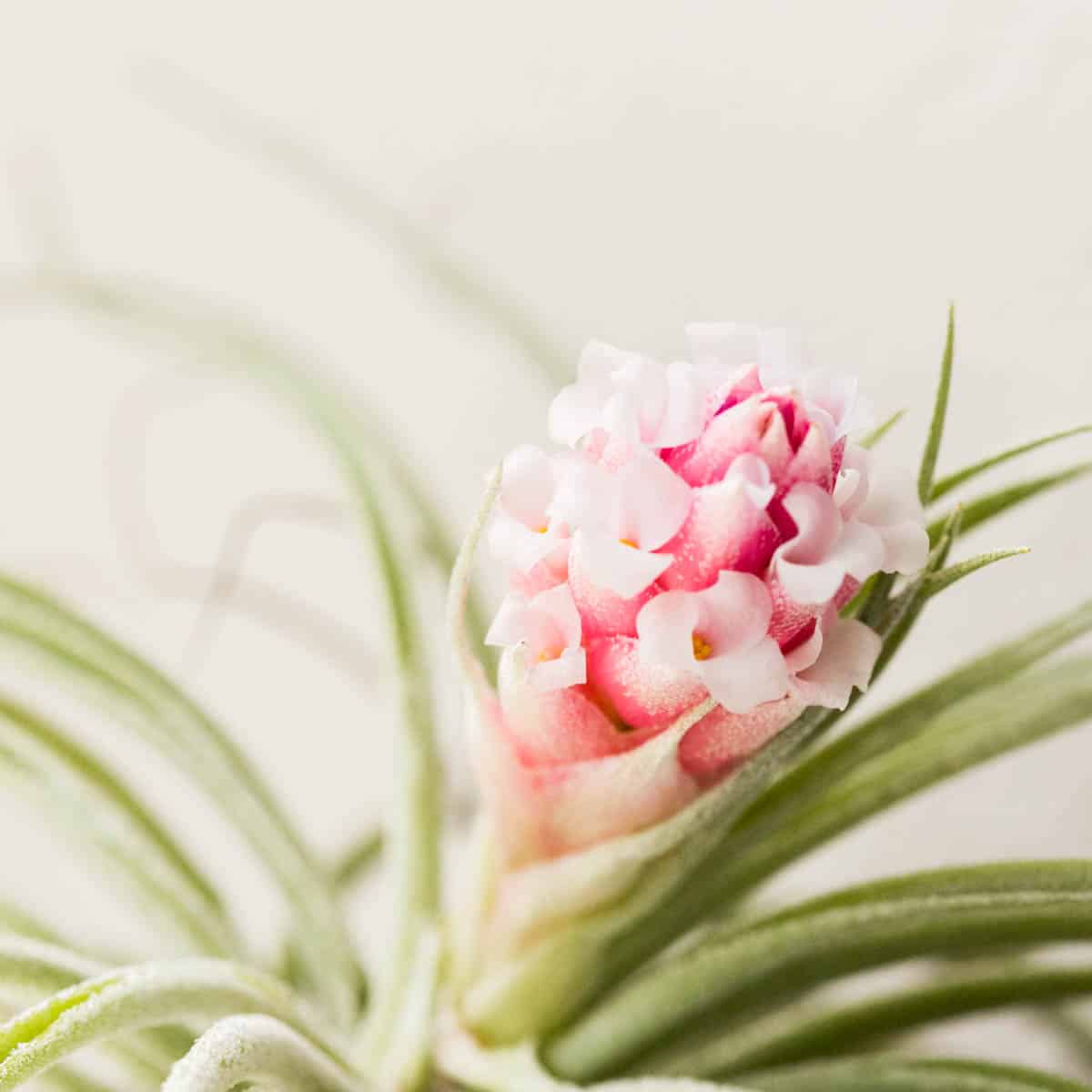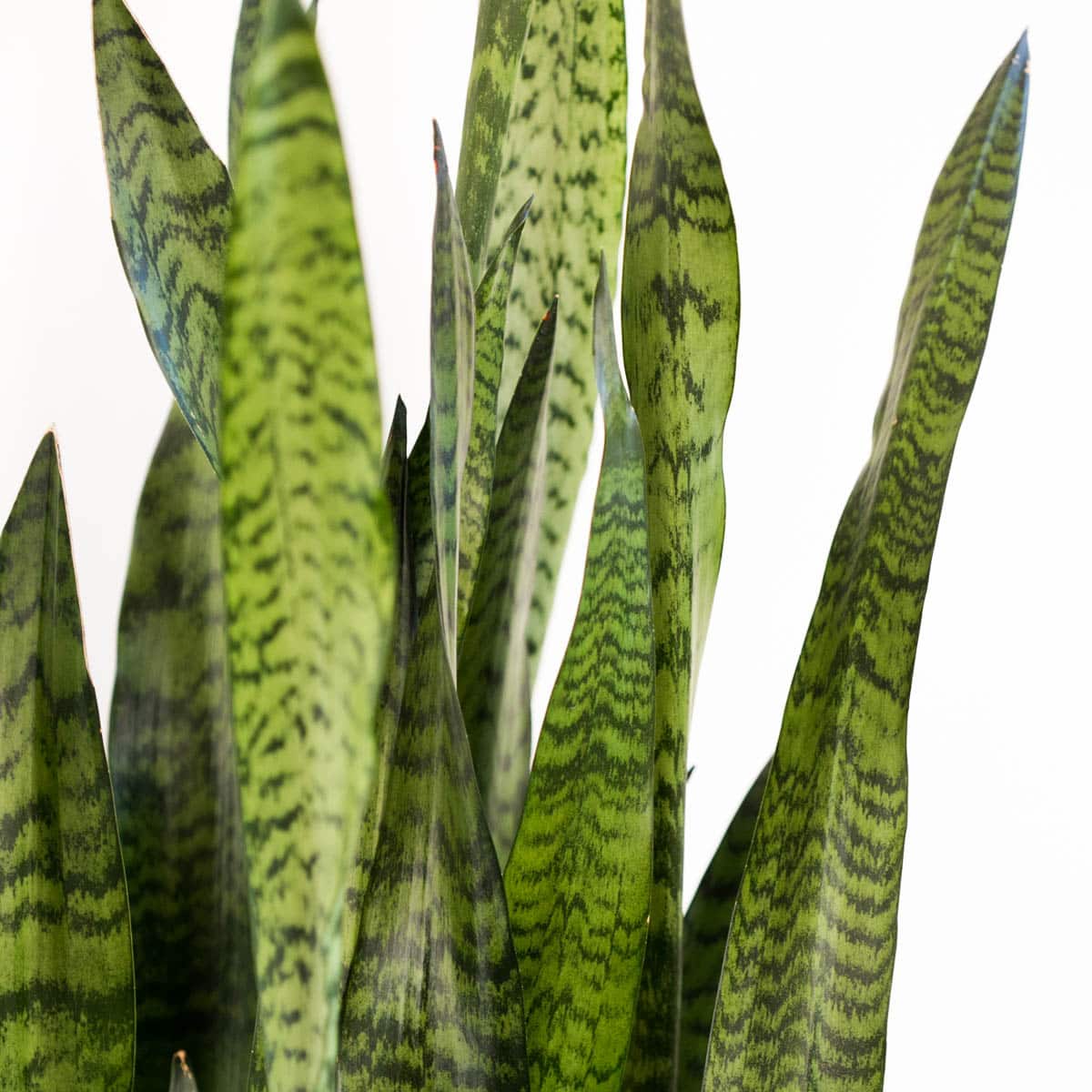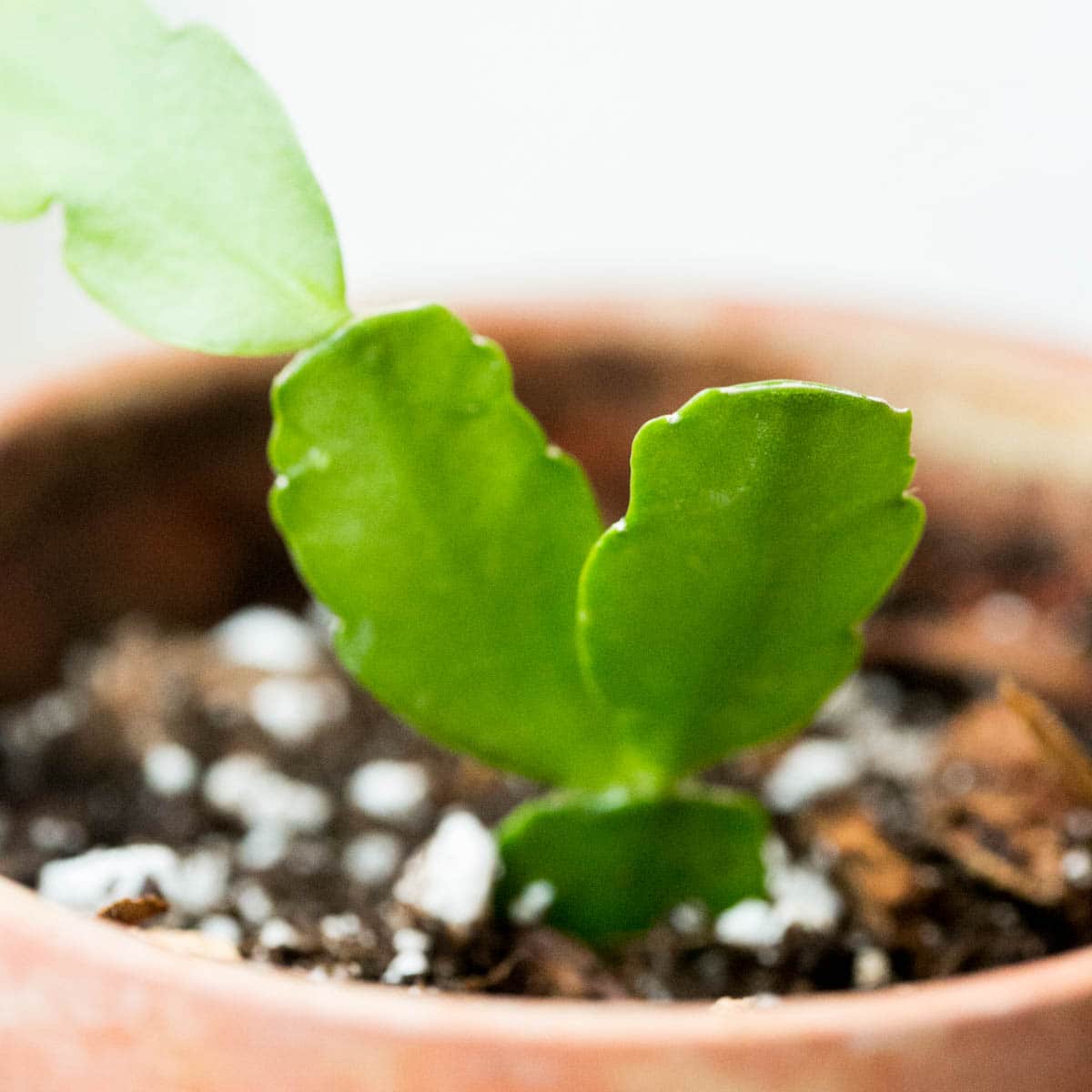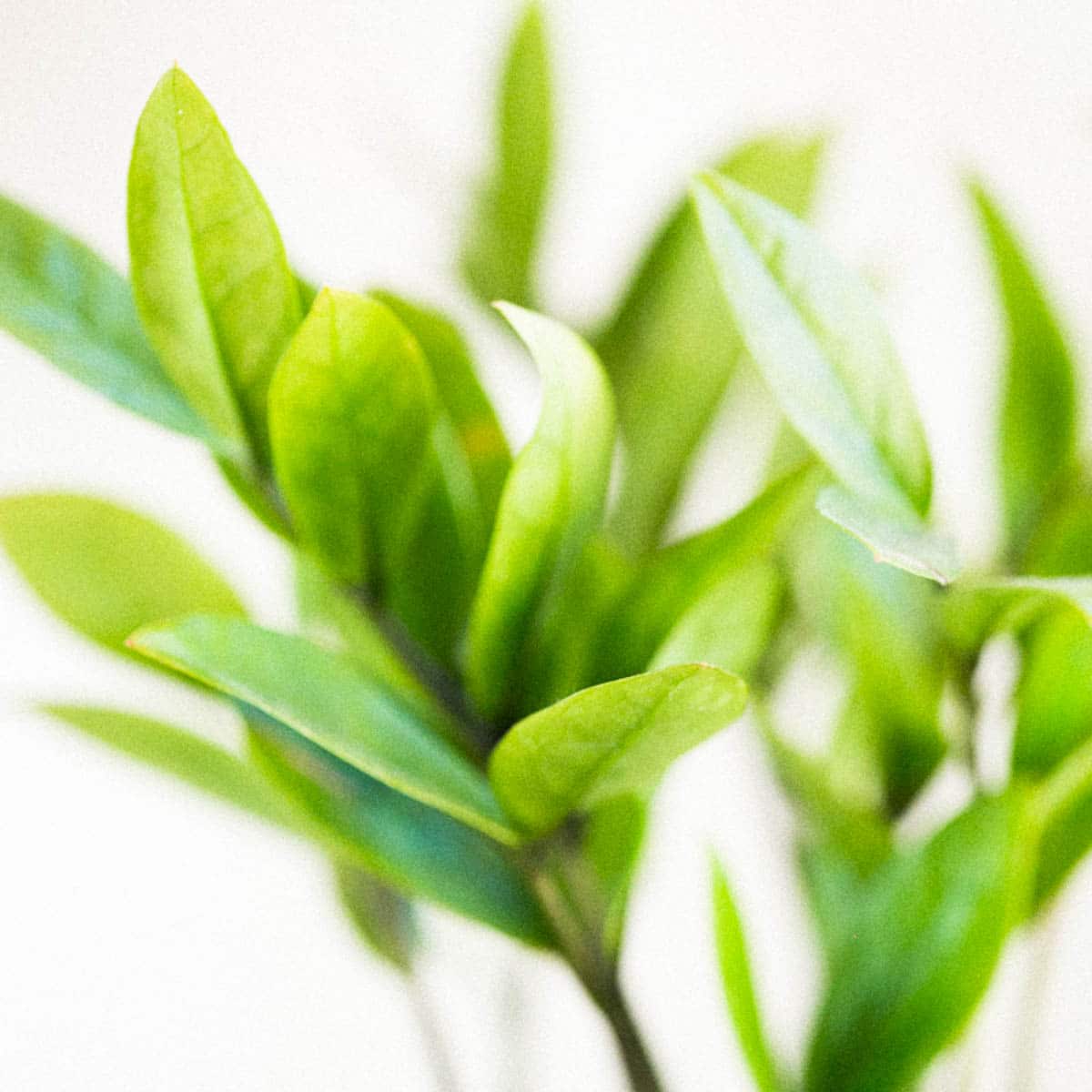Do Air Plants Need Sun Or Shade?
Do air plants need sun or shade?
Quirky and fun, air plants are all the rage.
Hailing from humid jungles in South America, air plants are easy to grow and aesthetically pleasing indoor plants. The best thing about these unique plants is that they can grow in many creative ways: on a book shelf, hanging from the ceiling, or in a glass globe.
But you may be wondering, do air plants need sun or shade in order to thrive?
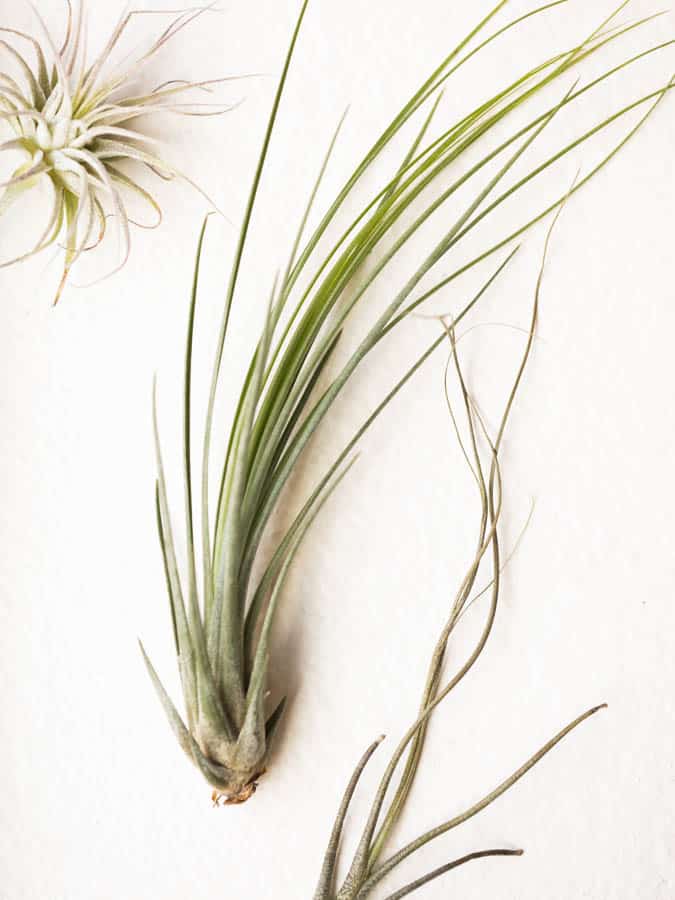
It’s really important to provide the right light for your air plants, or they may not grow well and may even end up dying!
Let’s dive in and figure out how much sunlight your air plants really need!
Air plants make up a genus called Tillandsia, featuring over 650 evergreen, flowering plants. They come from tropical climates: the mountains and forests of Northern Mexico, Southern United States, Central America, and the Caribbean.
Air plants can live in a diverse range of natural habitats such as rain forests, high mountain regions, swamps and on rocks.
Do Air Plants Need Sun?
Yes, air plants do need sun. The amount and type of sunlight varies depending on what species of air plant you have, so one of the most important things in growing air plants is learning what variety you have.
Many air plants do very well in bright, indirect light. In fact, some may even get sun burnt with direct sunlight!
There are other types of air plants, however, that can tolerate direct light.
Different species of air plants can tolerate different light conditions: some enjoy shady forests areas with indirect light, while others thrive off of full sun. In order to give your plant enough light, you need to understand what the different varieties of air plants need. (Don’t worry, it’s not too hard!).
Are air plants succulents? Find out here!
Two Types Of Air Plants + Their Light Requirements:
These two varieties of air plants have different light needs:
Mesic Airplants:
Mesic air plants (Mesic tillandsais) live in rain forest areas with thick tree canopies that shade their environment. These tropical plants receive lots of bright indirect sunlight. These air plants enjoy a natural habitat of of moderate temperatures and high humidity with filtered light.
Mesic is a term used to describe the amount of water in the environment. It is one of 3 ecological terms used to classify moisture supply. A mesic environment contains a moderate supply of moisture and is commonly found in temperate forests, stream side areas and some higher elevation habitats.
Mesic air plants are typically green in color and have shiny or waxy leaves. They have less trichomes than xeric airplants.
(Trichomes are tiny, hair like growths on the plant leaves that provide a natural protective barrier for the plant and serve to collect water from the air).
The natural environment for mesic airplants contains lots of bright, indirect light that filters through tree branches. Therefore, when growing mesic air plants in your home you will need to provide a bright, indirect light source.
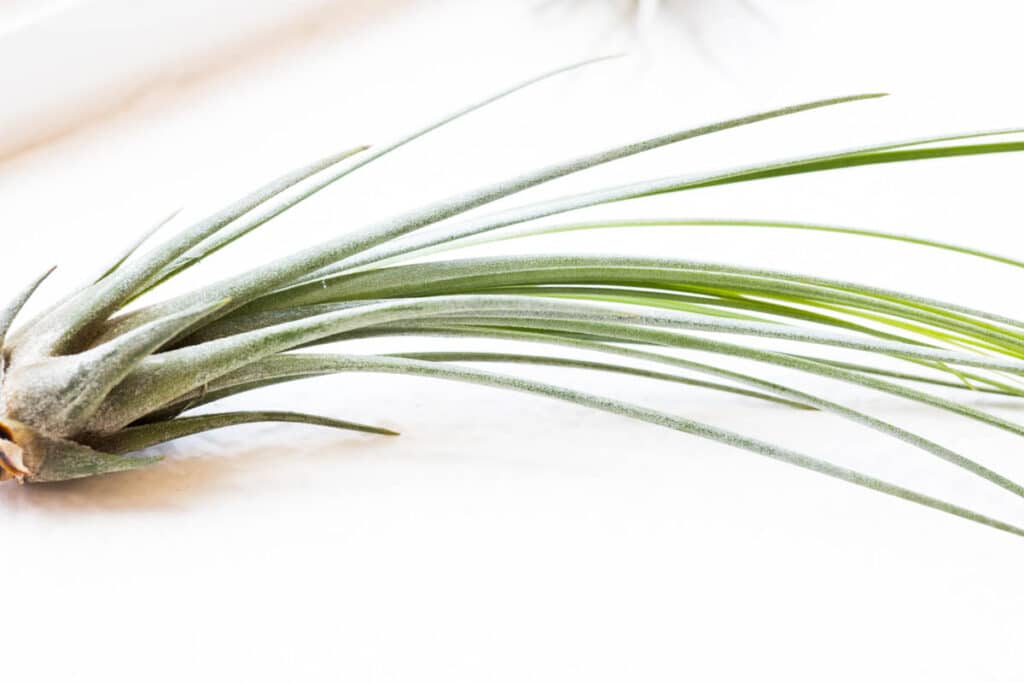
Tillandsia bulbosa and Tillandsia cyanea are two common types of mesic airplants.
Xeric Airplants:
Xeric air plants live in high level areas that receive full sun, such as on top of woodland canopies and on rocks. This type of air plant enjoys a lot more light and more infrequent watering.
These air plants can thrive in desert climates.
Xeric environments contain little moisture, and have a high moisture evaporation rate. A desert is a typical example of a xeric environment. So, air plants that thrive in xeric environments typically need less water and can tolerate direct sunlight.
Xeric airplants tend to be silvery green and can feature leaves that are wider and exhibit more trichomes, which give them the appearance of having fuzzy leaves.
Tillandsia xerographica and Tillandsia ionantha are popular xeric varieties.
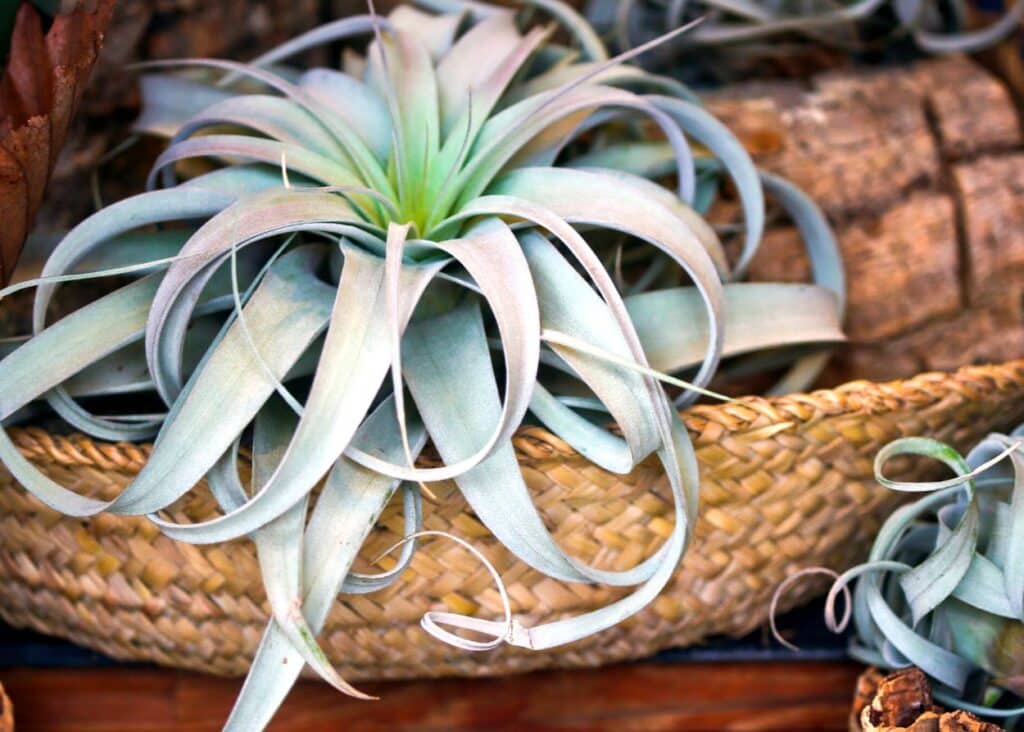
Did you know? Air plants have a small root system at the base of the plant that is primarily used for attaching to rocks and other plants. When you buy an air plant, the root system has typically been removed. This does not hurt the plant.
Now let’s jump into the best sources of light for your air plants. The best way to determine a good light source for an air plant is to understand the light in it’s native habitat, and luckily we just did that!
Learn how to get air plants to bloom here!
Best Sources of Light
Window light is the best source of bright, indirect light for your sun plant. Not all window light is created equal, however. This is how different window light behaves in your home:
- North-facing windows receive the little light and tend to be cooler.
- South-facing windows receive long periods of light and warmth. A room featuring such windows can be an ideal environment for your air plant.
- West-facing window receive light in the afternoon and are often hot and warm.
- East-facing windows feature the least amount of light and are often colder rooms.
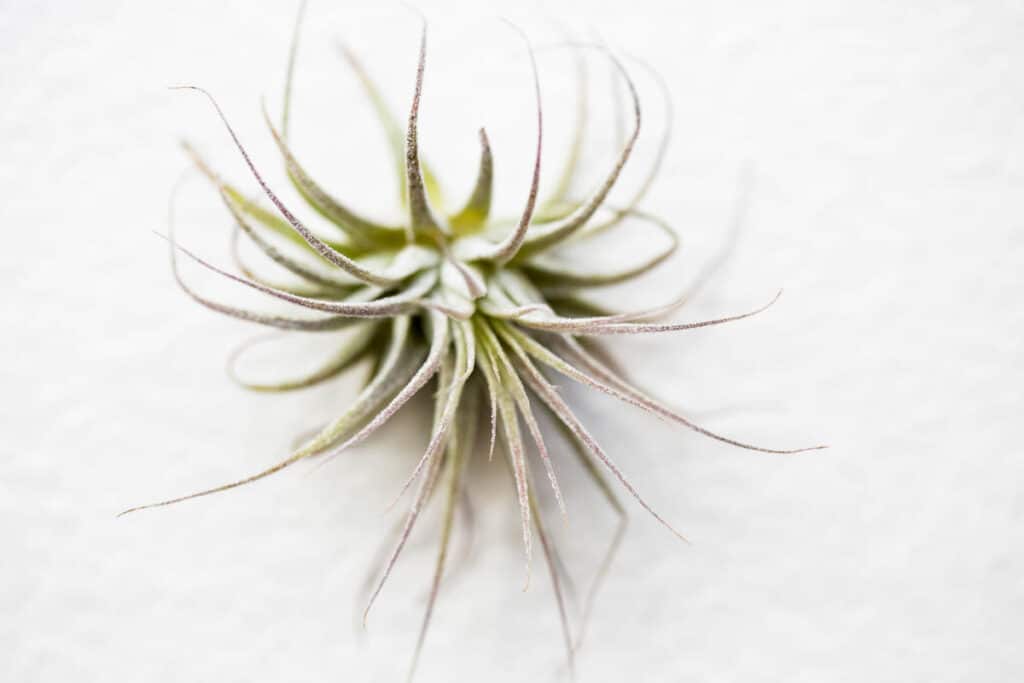
The easiest way to choose the best place for your air plant is to study the light in the room.
By watching the window light you will be able to understand how much light the room receives. The best rooms for air plants are south facing and west facing windows because they are warm and receive lots of light.
For direct light, place your air plant closer to the window, within 2 to 3 feet.
For indirect light, place your air plant several feet away from the window, 5 feet or greater.
Because air plants do not require soil they can be easily moved around if needed. One trick to giving air plants enough light is to rotate them throughout your home. If you do not have an ideal location for giving your air plants enough light, you can take them from their current location and move them to an area that gets more light.
Artificial Lighting
Fluorescent light can substitute for natural light when growing air plants indoors. Make sure to limit your artificial light to 12 hours a day, and place your plants 6-36 inches from the light source.
You can also use florescent light as supplemental lighting during the darker winter months.
General Air Plant Care Tips
Here are a few additional air plant tips to make sure your plants stay lush + healthy:
Water
Proper watering technique is essential for air plant survival. Just like with light, you’ll need to understand the differences between Xeric and Mesic air plants to determine how much water your plant needs.
Mesic air plants can receive a good soak in a luke warm water bath every 7 to 10 days. After taking your air plants out of the water bath, it’s essential to shake them dry and remove any moisture. (I often set them upside down to make sure water is removed). Excess water will cause the plants to rot.
Tolerating more heat and dry periods, Xeric air plants need less frequent watering.
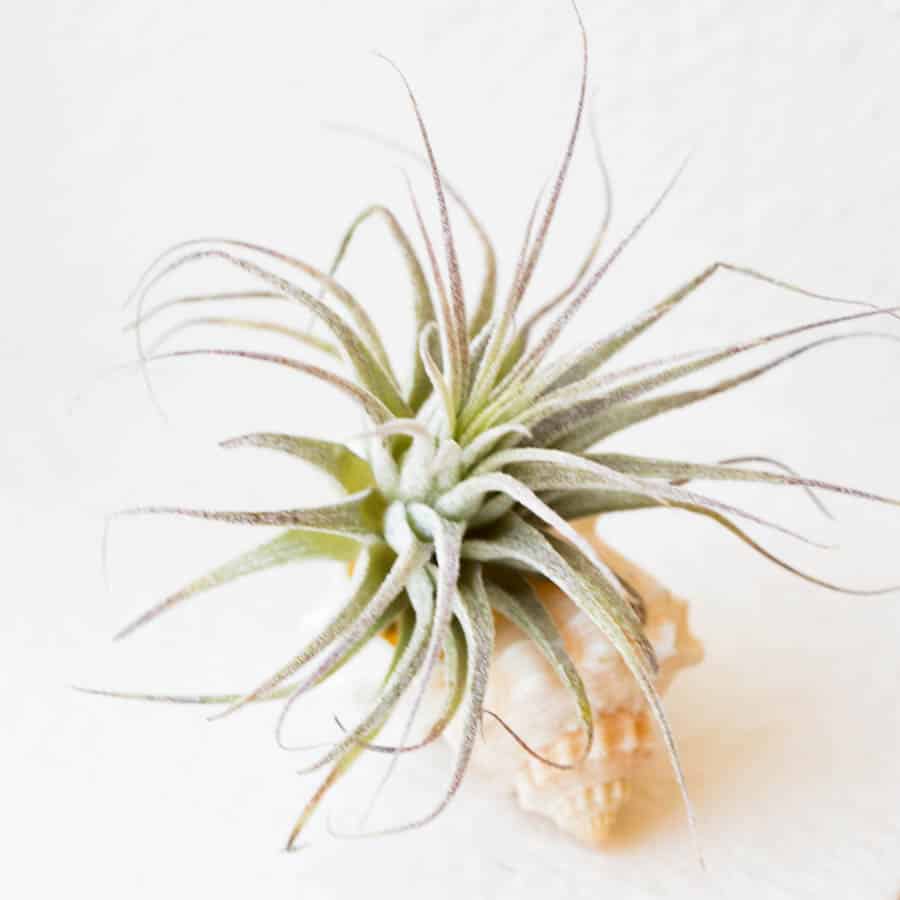
Make sure your air plants get enough water if you live in an arid, dry environment. You will need to water more frequently than a location with more humidity.
Distilled water is not recommended for air plants.
We recommend you use the best quality of tap water you can find to water air plants. Rain water and filtered tap water are great choices. Learn more about the best water options for indoor plants here.
Humidity
As a general rule air plants crave humidity levels about 50%. The average home has humidity levels between 40-50%.
Depending on your local environment, you may need to create more humid conditions for your air plants by spraying with a fine mist spray bottle or using a humidifier.
Dry environments will require more humidity. The good news: increasing humidity is fairly easy!
Soil
Air plants do not need soil and receive their nutrients from air and water. They can grow on many mediums: shells, rocks, wood planks or even hanging from strings. They are popularly grown glass globes and glass terrariums.
Fertilizer
You can feritlize air plants with a bromeliad fertilizer several times a year, and up to once a month max.
In addition to these general care tips, air plants need good air circulation and should not be placed on soil or another moist medium. You want to keep your plants away from anything that can encourage rot and decay.
Frequently Asked Questions On Air Plants
Air plants can grow without sun if enough quality artificial light is provided. They do grow best with natural light however (in our experience). They will not thrive in low light conditions.
No, air plants cannot survive in low light. Mesic air plants need bright, indirect light in order to thrive and xeric air plants need bright direct light (although they can tolerate some indirect light as well). If you do not have good natural light in your home, consider supplementing with fluorescent bulbs.
No, air plants cannot grow without light. They need either natural window light, diffused light, or artificial light in order to survive and thrive.
With their charm and funky beauty, indoor air plants are one of the most interesting and unique plants you can grow.
These easy indoor plants need lots of bright light and will not thrive in low light areas.
The light that each plant requires will be dependent on what variety of air plant you are growing. Air plants are the perfect plant for new house plant enthusiasts. Just make sure to give them the right kind of light: mesic air plants prefer indirect light and xeric house plants enjoy direct light.
We hope you enjoyed learning about air plant light needs with us. We’d love to hear what kinds of lovely air plants you are growing… let us know in the comments below!

